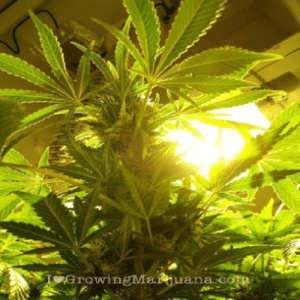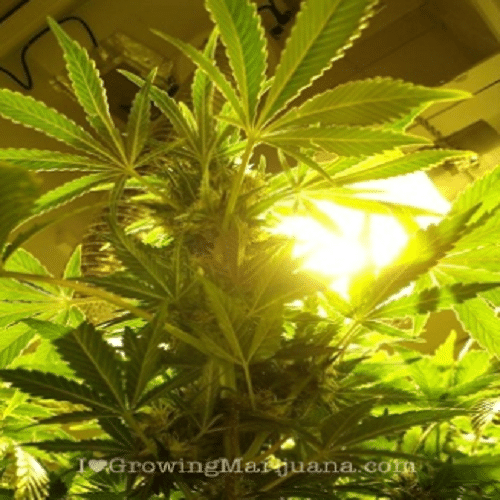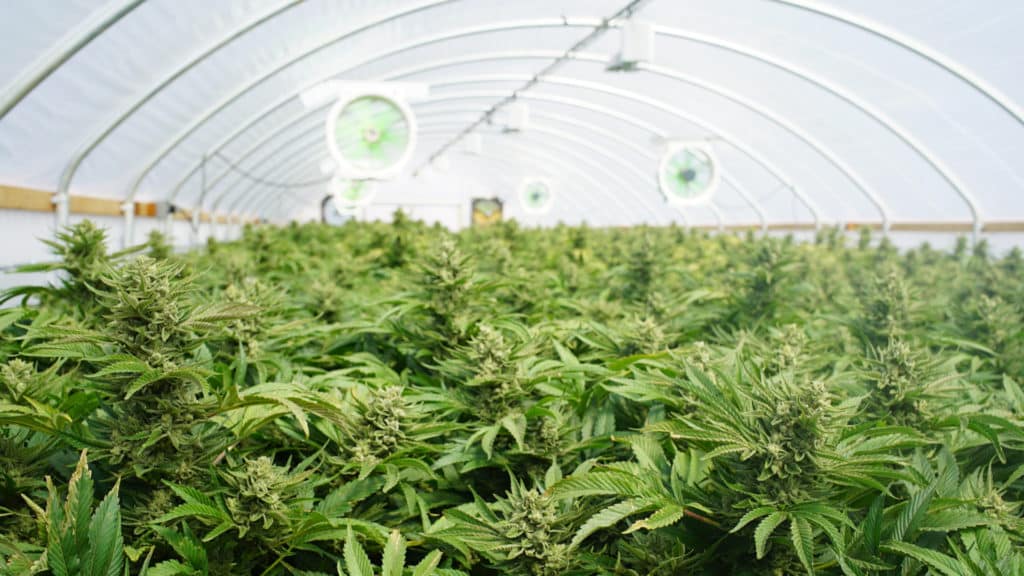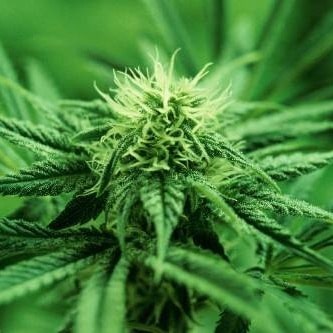 How To Optimally Place Your Marijuana Grow Lights
How To Optimally Place Your Marijuana Grow Lights
How Grow Lamps Function
Except for the top and bottom of the arc tubes where obstructions are located, the construction of grow lamps enables light to go in every direction. Artificial light production is brought about via agitation of the chemicals, which occurs in a high-voltage vacuum tube. The glowing of these chemicals allows light to come from its source at 360 degrees.
This obstruction blocks light, meaning that just half the light is coming out at the end as compared to six inches to the side. This is determined with a light meter. This is caused by particles that are near the glass arc tube at the time of agitation.
Reflecting Light Correctly
The reflection of light is very important for creating an ideal environment for your plants to grow. Therefore, the location of the wall that creates this reflection is also of great importance. A reflective wall is necessary for capturing the growing area’s light when your room space is bigger than your growing space – otherwise you would need to light up the rest of the room as well as the walkways. This is clearly a waste of electricity. You can use Myler or other silver, shiny products for your reflective wall, but a reflective white paint is favored by most professionals. Make sure to download my free marijuana grow bible at this link and grow like a pro!
For ebb-and-flow gardens, it’s important to set up your reflective walls just 6 inches away. Because the width of ebb-and-flow tables is usually four feet, putting up reflective walls at this distance still allows for airflow, as well as the bushing out of your plants. You’ll need to set up your reflective walls a bit differently if you would like to grow plants that are bigger. Do it at five-foot centers per 1000 watts. For example, use a single light if it’s 5×5 feet, 10×5 feet should have 2 lights, 15×5 feet should have three, 10×10 should have four, etc.
The air-cooling of such lights allows for hot air’s removal, taking it away from the growing area. At the same time, a loss of light is avoided because of the reflective, white-colored walls.
Maintaining the Efficiency of Your Lighting
You should make sure there’s an equal cover of light across your entire garden to properly set up your lights. You can use a light meter to ensure that no hidden hot spots exist.
Another easy way to test the intensity of your lights is simply through feeling with your hands. Leave your bare hands where you plan on placing your plants. If you’re unable to keep your hands there for long due to the excess heat, it’s a good indication that your plants also would be uncomfortable with such lighting. To put it simply, as a rule: Whenever you’re uncomfortable in the grow area, so are your plants. This includes temperature, humidity, ventilation, and so on. If you don’t correct this, you will definitely have a smaller yield.
One important fact to note is that some light (10%) can easily be lost simply by choosing to burn your lamps horizontally. The lamp also can lose 25% of its lifespan, meaning that to achieve the highest light output, lots of growers will simply change the light after just 75% of one year’s usage.
For horizontally placed lamps, two-thirds of the lamp’s light emissions bounces of the reflector, while just one third goes straight to the plant canopy. Losing light because of the quality of the reflector’s material can also occur; if it’s 92% reflective, you’re losing even more light – 8% in addition to the two-thirds already lost. Reflectors with built-in glass lose a further 3-5% of light.
For more specific numbers: 100 watts would be lost per 1000 watts (10% loss), and 666.66 watts of light (two-thirds of 1000 watts) are being affected. Therefore, losing 8% and then another 3% means 11% loss of 666.66, which is 73.33 watts. Adding the original 100 watts to that means that, in total, 173.33 watts of light are being wasted. In other words, nearly one fifth of the yield is ruined simply because of the orientation of your lamps.
Wave cancellation is another factor that can cause light loss due to horizontal lighting. Wave cancellation causes the loss of light when it is bounced back at itself. It can be confusing because light seems to be continuous, given the fact that its bandwidth is extremely small (only nanometers), and its creation is at time intervals invisible to the naked idea.
Although we know that there is a clear light loss when it is redirected into itself, we do not know exactly how much this is. Another factor is the elements used in lamps, where their agitation from electricity (especially salts) occurs. Simply put, expensive artificial light should not be wasted. This gives a high value to light meters, as well as the optimal positional of lamps.
For a rough guide for light placement, see below.
Type of light: distance from plants
LED: Very near
Fluorescents: Three inches
Compact Fluorescents: Three inches
Sulphur Bulbs: Eighteen inches
Induction Lighting: Fourteen to eighteen inches
To find out more about LED grow lights, click on the banner below:
High-Intensity Discharge Lights:
1000 Watts: Twelve to eighteen inches
600 Watts: Eight to sixteen inches
400 Watts: Eight to sixteen inches
250 Watts (or lower): As close as possible
Which Lamps Work Best for Flowering Cannabis?
The easiest to find and most reliable lamps are HPS (high-pressure sodium) and MH (metal halide) lamps. You’ll start to see obvious differences with types and brands as you experiment with the variety of choices and get nearer to picking one source of lighting. The plants located in between the lights often end up being the healthiest and highest quality plants. You will see major differences in the growth and quality of the plants as you move further away from the central light footprint.
The sun has a reddish cast at sunrise and sunset. Because HPS lamps are strong in the red spectrum, they “wake the plants up,” or stimulates them to begin working every day. The sun’s color changes to blue as the day continues, and when the day ends the sun returns to its red color. The spring and fall sun has more red in the early morning, and during the early summer the colors are more bluish early in the morning. All these colors encourage plants to begin growing and flowering accordingly.
You can spot this reddish hue when the sun is rising or setting. This reddish hue stimulates plants and makes sure they adhere to the changing seasons (i.e. dry or wet season), as well as the length of the day. Because of plants’ evolution over hundreds of millions of years to adapt to this natural phenomenon, it’s important to try and replicate it as exactly as possible. The daylight 5K metal halide lamps give off the best type of light for growing (vegetating) plants. It will help leaves to come out healthier and larger than when MH lamps are used. A common misconception among many growers is that there is no difference between MH lamp output. In fact, a difference does exist; one example is the MHS 125,000 MH/U universal position or MH 90,000 initial lumens output.
Additionally, it is better to use six T5 fluorescent tubes for the vegetative growth of plants, as compared to MH lamps with 400 watts. The color spectrum of T5 lamps is better than MH, and they also have a less drastic difference between the night and day temperatures. The lighter time (day) should, of course, be a higher temperature than nighttime. To make it ideal, there should be a difference between light and dark temperatures of approximately ten degrees Fahrenheit. If this is not done, “stretching” (extra elongation) between internodes will occur, meaning the plants will grow to become tall and lean rather than short and bushy.
Preparation of Your New Light Setup
Make sure you always have the behavior of light at the back of your mind when planning a lighting scheme: how it travels, how it reflects, and how it bounces around the area of growth. Remember the importance of equal light distribution when using more than one lamp; otherwise your plants will grow in a variety of ways since they will receive varying amounts of light. Plants that receive the same amount of light will grow quite similarly.
You should also remember to grow your plants by starting with cuttings or seedlings that have even and consistent growth. Never start with differently sized plants under the same light, since getting them even light and growing them at the same rate would then be nearly impossible. If you grow seedlings and cuttings side-by-side, cuttings will generally grow faster and larger than seedlings. Avoid this by keeping clones and cuttings the same size, and only choose cuttings that look similar when rooted.
Check the equality of distribution of your lighting even before you put your plants in the growing area. Do this with a light meter. Simply bring it under where the two sources of light meet, and change the location of the lamps until you are sure the light is even everywhere. Keep in mind that this is easier to accomplish with vertical lights than with horizontal ones. Do not forget the importance of heat, as well; lights give off heat, so it is especially important to be aware of this factor when using extra lights. If not, you could cook your plants’ growing tips.
Simply put your hands underneath the lamp (where the plant canopy will be located) and see if it becomes uncomfortable after a couple minutes. If so, your plants would be uncomfortable too – but unlike you, they can do nothing to escape such discomfort. An inverted “V” is located in almost every horizontal reflector. Its purpose is to keep light from reflecting again through the arc tube, bouncing back on itself, and disappearing. If you try and think of one light beam’s size (1/10,000th of a human hair), then imagine the many beams of light and the fact that this means some of them will surely be canceled when they reflect.
Growers must try to keep this from occurring. It would indeed be a challenge to set it up in a way to achieve a 100% bounce back, given one beam’s minuscule size.
Advice on Horizontal Lighting
A: This defines the light’s strength. There would be a lack of light above this line due to its reflector, which directs the light toward your growing area. If one is not in the stream of light, it will begin growing incorrectly due to its lack of light.
B: There are multiple lamp systems, and they should be correctly place so that the top or your plants all receive the same amount of light. Uneven growth can occur when equal light distribution doesn’t exist, and that perpetuates the difficulty of keeping your garden well-lit.
C: Any light that travels all the way down to the garden has to have an equal strength as compared to B, where the two beams touch. As mentioned above, unequal distribution will cause unequal plant growth.
D: Grow room lights’ location also matters. You can place them further away from the reflectors than you can from the reflective wall, where we would like to bounce the light off of. Therefore, to achieve even lighting, place the light closer to the wall than the middle of the room.
E: Lights can be a bit further apart from each other since it is unnecessary to bounce light off of a reflective wall. Make sure he reflector’s edge is 12 inches away from the wall and 24 inches away from each reflector.
Using Light Patterns as a Placement Guide
If you’re deciding between horizontal and vertical reflectors, simply use the light footprint. Horizontal reflectors focus the light in a smaller area than vertical ones! Although you might assume this means there would then exist about two times the light in the growing area, it’s important to note that the horizontal light actually is losing light simply from its position and material. They do give off more light per square foot, however – about 1.3 times more than from a vertical reflector. A vertical setup, on the other hand, would provide about twice the area.
Note: every calculation for 3 watts per square foot are from vertical lighting. We also must keep in mind how light leaves the arc tube – it goes in 360 degrees, but, of course, cannot get through the obstructions on either side of the tube. Therefore, a very small of light goes through the ends, which consequently alters the light concentration.
The Production of Light
As mentioned above, light comes from a combination of specific chemicals that are electrically agitated inside of a vacuum tube. The chemicals then begin to glow, creating the light that has a 360-degree pattern. Because of the existence of millions of such chemical elements in the arc tubes, light is formed in all directions – excepting the ends. Regardless of whether the chemical is near the surface or near the middle of the tube, they will all produce light in 360 degrees. Plants take in light from all directions due to this continuous distribution of light. Of course, light cancellation will still exist to some degree, but it will not stop growth. Rather, it just provides an unavoidable challenge when setting up your lighting.





